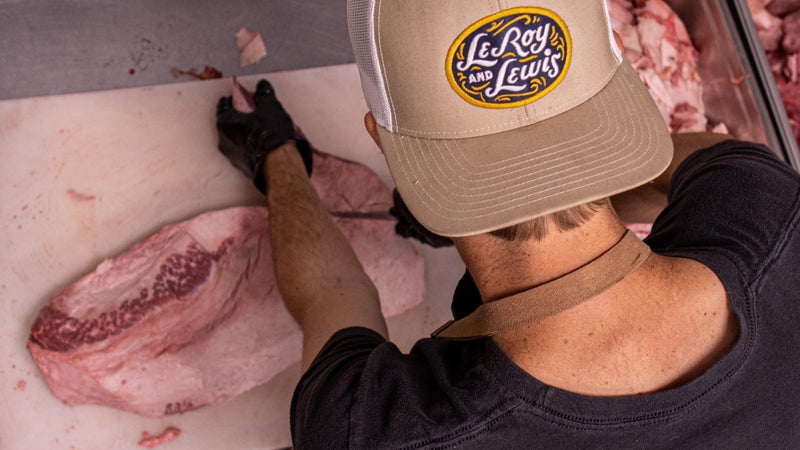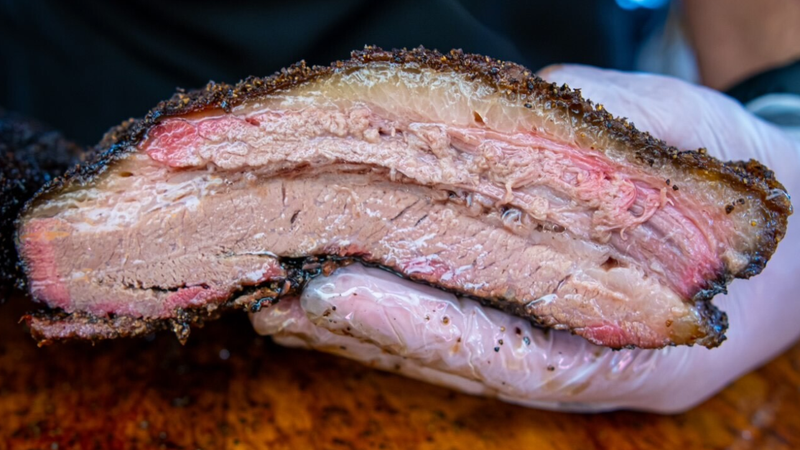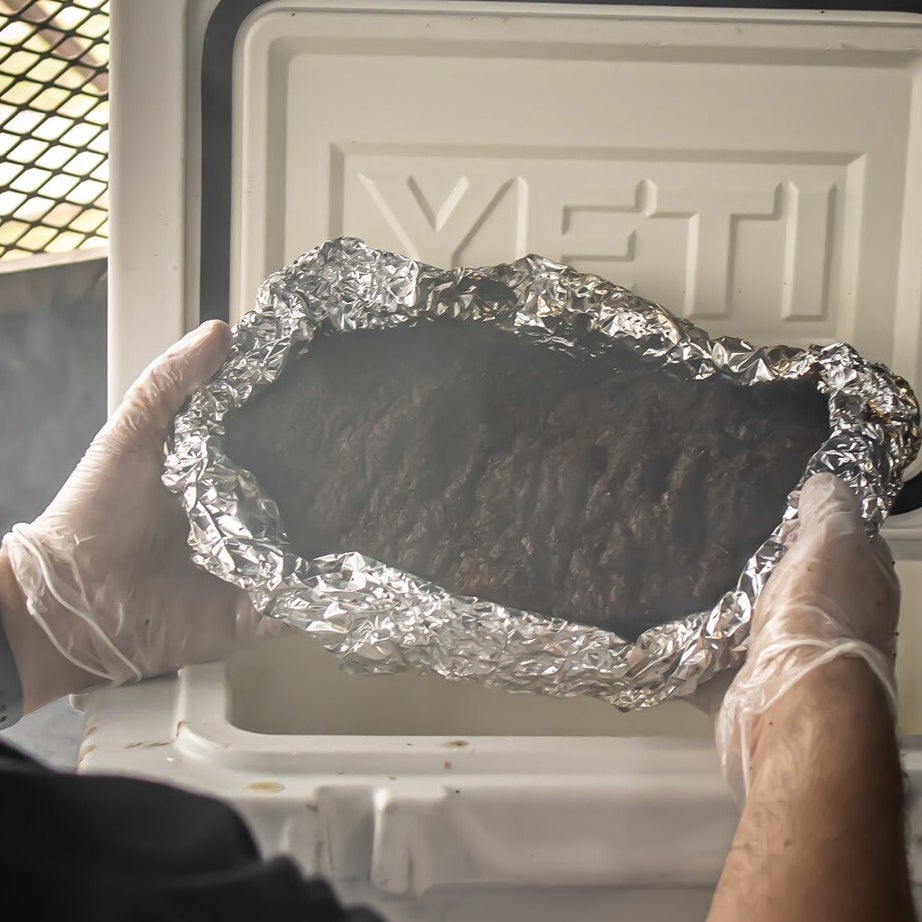Evan LeRoy, who owns Austin’s beloved food truck, has a straightforward credo for how to smoke brisket like a Texan: “Keep everything as local as possible,” he says. For him, that means Texas beef raised on Texas grass cooked over Texas wood by a Texan. But for people living in, say, Wisconsin, he says, go for Wisconsin beef cooked over Wisconsin wood. Beyond keeping it local, here’s what else you need to know to up your brisket game.
-
Get High-Quality Meat: LeRoy buys his meat from HeartBrand beef in Flatonia, Texas. That ranch raises Akaushi cattle, which are originally from Japan, and LeRoy thinks they produce the best brisket meat on the planet.
-
Take Your Time: Brisket usually takes 10 to 12 hours to cook. If you want it ready for Saturday lunch, you’ll need to start cooking Friday morning and store it overnight—more on how to do that below.

-
Trim Carefully: Aerodynamics are what’s important here. LeRoy makes sure his brisket has nice, rounded edges so that the heat rolls over it evenly just as air rolls over a sports car.
-
Season Every Square Inch: “Sometimes you see people just season the top and bottom of their brisket and that’s a huge mistake,” LeRoy says. “You want your rub everywhere because those outer sections create the best, most amplified bites.” To get his seasoning evenly distributed, LeRoy fills a large platter or bowl with coarse ground pepper and Diamond Crystal kosher salt and then dunks the meat until it’s coated with a thin but even layer.
-
Keep Your Heat Consistent: If you want real barbecue, LeRoy says you need an offset smoker (not a regular grill) and that you should keep the temperature somewhere between 250 and 300 degrees. He keeps his smoker between 275 and 300 because it’s large and the brisket can be far away from the fire. People using smaller smokers will want to keep the heat a bit lower—between 250 and 260.
-
Wrap, or “Boat,” Your Brisket: Tradition says that when your brisket reaches an internal temperature of 165, it’s time to wrap the meat. LeRoy prefers to create what he calls a “boat.” His boat is a piece of tinfoil that covers the bottom part of the brisket and comes up over the sides by a couple inches. This does two things. First, it collects the juices that flow off the fattier top part of the brisket and allows those juices to saturate the leaner, bottom part. Second, by leaving the top part of the brisket exposed, the boat also allows the fattier side to crisp up.
-
Don’t Let It Get Too Hot: LeRoy takes his meat out when the internal temperature hits somewhere between 200 and 205 degrees. At that temperature the meat is moist and soft, but it hasn’t hit 212—which is when water boils and the meat starts to fall apart.
-
Rest and Store the Meat: After the meat is done, LeRoy rests his brisket at room temperature for an hour. He has a special restaurant-quality machine that then keeps the brisket warm until it’s ready to serve. His other go-to warming device, however, is a . If you cook the meat Friday, he suggests placing it in a Tundra overnight and it should be the perfect temperature when you’re ready to serve on Saturday afternoon. “We use Tundras all the time when we’re traveling with brisket and they’re perfect for storing the meat,” he says.

-
Pay Attention when Slicing: When he’s ready to cut the brisket, LeRoy cuts it in two, lengthwise right down the middle. He uses a serrated knife, makes long strokes, and cuts one-third-inch slices longways from the lean side. He then turns the fatty side 90 degrees before cutting because the grain runs a different direction on that part of the meat. For the fatty side, he suggests half-inch slices.
-
Garnish and Eat: Down in Austin, LeRoy says folks like to make a “foldover,” laying one slice of brisket on a piece of white bread, then topping it with pickles and onions and just a bit of barbecue sauce.
From coolers and drinkware to backpacks and bags, products are built to meet the unique and varying needs of diverse outdoor pursuits, whether in the remote wilderness, at the beach, or anywhere life takes our customers. We have an unwavering commitment to outdoor and recreation communities, and we are relentless in our pursuit of building superior products for people to confidently enjoy life outdoors and beyond.

